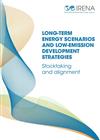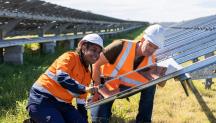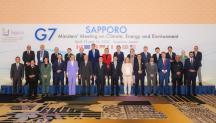

Long-term energy scenarios and low-emission development strategies: Stocktaking and alignment
Newsletter
Long-term energy scenarios (LTES) are a vital planning tool for guiding the energy system to a clean, sustainable and increasingly renewable-based future. Following COP21 in Paris in 2015, countries have also begun to develop long-term low greenhouse gas emission development strategies (LT-LEDS) to explore the challenges and opportunities associated with the structural transformations needed to reach carbon neutrality and meet the targets of the Paris Agreement.
As of October 2022, 36 out of the 53 LT-LEDS published have featured scenarios as their main tool to outline alternative pathways and targets and to quantitively assess the short- and medium-term policies needed to reach their long-term targets. This report aims to explore the processes behind the development of scenarios in energy planning publications and scenario-based LT-LEDS, and the alignment between these two processes. It is a publication of the LTES Network, of which the UNFCCC is a technical partner, and aims to complement the UNFCCC’s synthesis report on LT-LEDS.
The report provides a comparative analysis of 24 LTES and 36 scenario-based LT-LEDS from a total of 45 countries. It considers the institutional and governance framework in which LTES and scenario-based LT-LEDS publications are developed, including the level of institutional coordination, stakeholder consultation, type of publication, and highlights from these publications. Additionally, it assesses the coverage of energy transition elements included in the scenarios of these publications (ranging from renewable generation and end-use sectors to mineral constraints and job impacts).
The report concludes by highlighting the advantage of basing LT-LEDS on scenarios, making the policy recommendations more robust, facilitating communication of the outcomes with stakeholders, and increasing implementation potential. It also provides recommendations on how to improve institutional alignment between LTES and scenario-based LT-LEDS and expand the scope of the scenarios to better reflect the realities of the energy transition.




